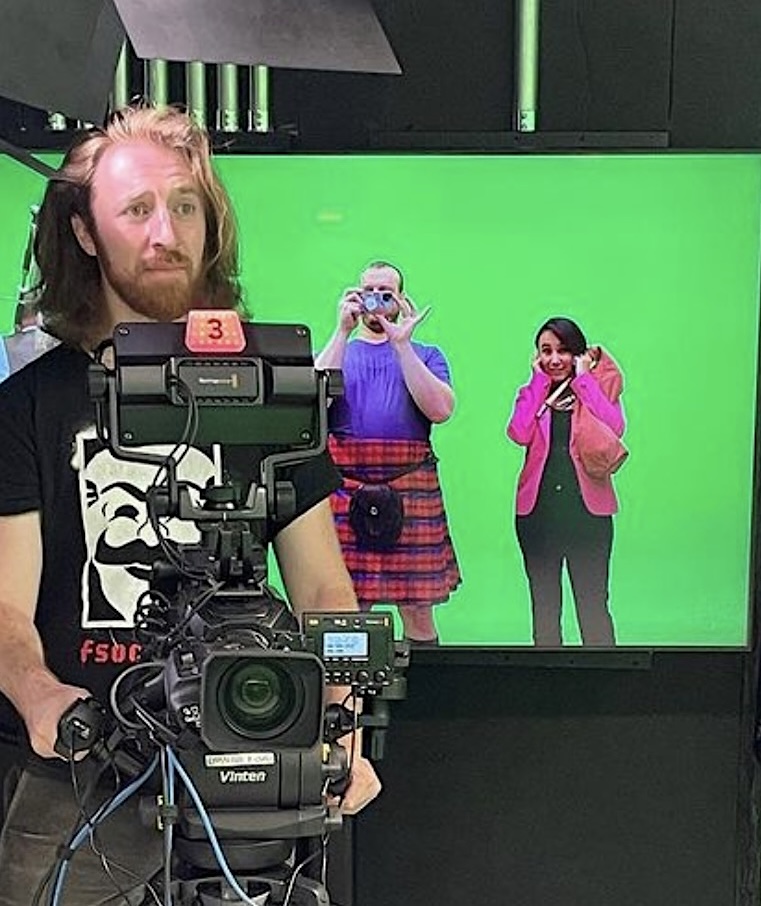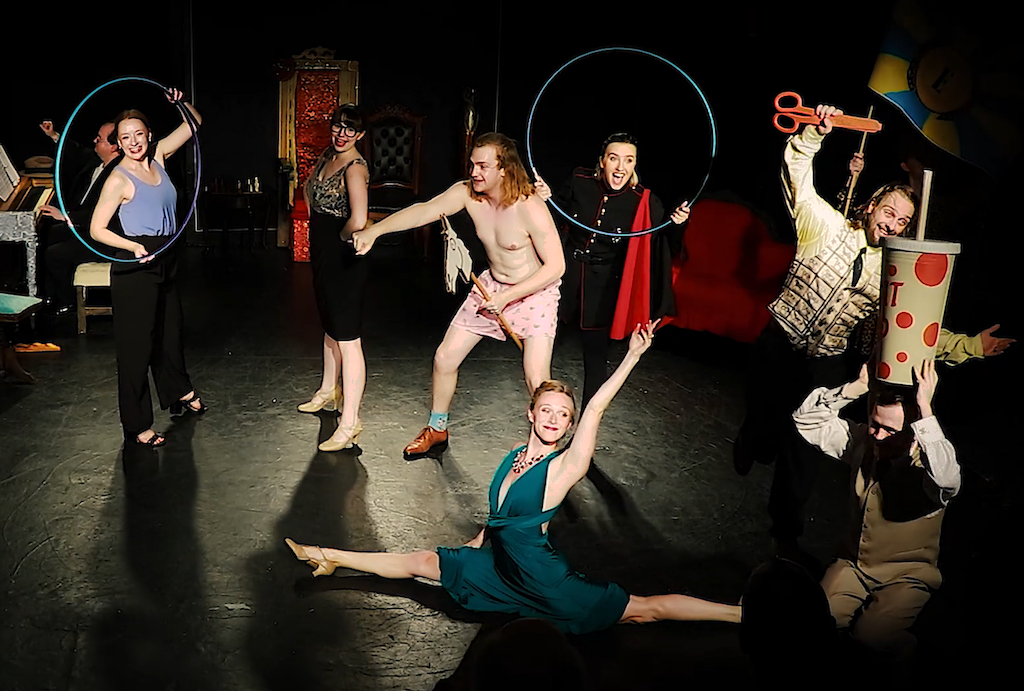BY CLAUDE SOLNIK | Jacob Maximillian Baron, a videographer who specializes in events and performances, moved around the stage at Theater for the New City recently before a show. A few members of the cast of “A Stitch in Time” sang a song, while he aimed his Canon 80D at the singers, getting images from various angles. He would later take that closeup footage and combine it with video shot during the show to create a video of the play that would mix cinematography with a reproduction of a performance.
While theater is by its nature ephemeral, shooting videos of shows has become one way to create a permanent or at least a lasting record. Broadway HD provides videos of Broadway shows. And filmed versions of shows such as “Chicago,” “Les Misérables” and “Hamilton” have become hits. A film adaptation of “Rent” also helped popularize that play. But even smaller productions seek to capture whatever lightning is caught in the bottle on stage.
“It’s more or less difficult to shoot a video of a play depending on your access to the show and the performers,” Baron said as he discussed shooting videos of theater. “The more rehearsals or performances you can attend, the more coverage you can get.”
While videographers may not typically be considered part of the theater team, the reality is they can be an important part of it for shows at TNC or elsewhere. A live performance has the excitement of the moment, but also the risk of either being a good night or one that’s less compelling.
“There are no do-overs with live performances and there are moments of magic that can happen,” Baron added. “You want to make sure you have the camera on. And when mistakes happen, you want to make sure you have footage from another day.”

He has shot corporate conferences, footage of camps and workshops, networking events, birthday parties, weddings and music videos for Wikka, otherwise known as Alexia delGiudice, as well as theater.
“The whole point of being a videographer is being adaptable,” he said.
Shooting video of theater is an art form in its own right. Sometimes Baron, for instance, shoots during dress and tech rehearsals, mixing that footage with the live show.
“Multiple angles make it more of a film than just a taping,” he said of filming without an audience. “That’s why you need as many days as possible. You get to know the show and fun things you can do with it.”
He likes to get time on the stage, while the show is being performed, although not with an audience.
“That’s almost treating it like a film adaptation,” Baron said. “That makes it engaging as a film, as opposed to footage of a show.”
Baron went to Oberlin College for cinema studies, where he also directed theater, which he believes gives him an important head start in shooting performances.
“Having worked on shows helps me a lot to know not only the language of the stage and what to look for,” he said. “It helped me know as a director of a theater performance exactly what I wanted to have noticed in the show.”
He said there are some well-filmed versions of musicals, including Spike Lee’s filming of “Passing Strange,” as well as “American Utopia,” David Byrne’s show, and “Hamilton.”
“It showed you can make a film of a show and have it be engaging and more than a taping,” he said of “Hamilton.”
Baron said he started doing videoing on stage, without an audience, after seeing the film version of “Hamilton,” including angles other than the audience’s gaze.
“With a show, if you don’t have a ton of time to cover it, you don’t have leverage for missed sections,” he explained. “The most difficult part is getting that continuous, unbroken footage.”
Baron doesn’t believe you can film a show with just a single camera. He sets up one camera for a wide or master shot from the back, so you see everything happening in the show.
“I also set up a camera closer to the stage, to the side, that I move around more and get more creative with and get more detailed coverage,” he said.
The camera to the stage’s side provides a more cinematic take, including close-ups and movement, providing active shots to create a video for the cast, crew and posterity, as well as a means to pitch the show to others.
“When a show is over, whether you filmed it or not, that version is gone,” Baron said. “It’s a beautiful experience to see live theater, but a video solves the issue of impermanence.
“No one can fully recreate the live theater experience. Through my work, I can create the most vivid and accurate memory of that experience as possible.”


Be First to Comment